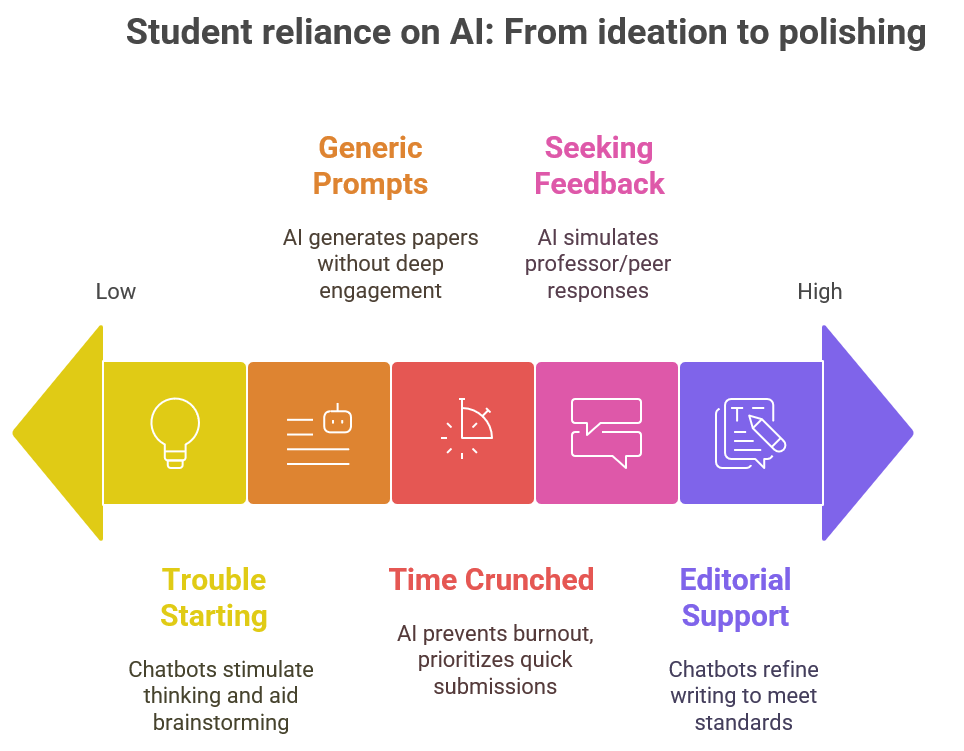II. Teaching with Writing in an Age of AI
Why might students want to use an AI Text Generator for writing assignments?
Some instructors may assume that only lazy or unethical students would use ChatGPT, but there are many legitimate reasons why any student—including those we know to be motivated and independent learners—might choose to use AI at any stage in the writing process. Consider these possibilities:

- Trouble getting started. A student taking a course in an unfamiliar field, or tackling an assignment in an unfamiliar genre, may feel uncertain about what their writing should look or sound like and have trouble knowing where to start. They may or may not have access to an instructor-provided example for inspiration. Even more, dialoguing with a chatbot can stimulate thinking and help with brainstorming especially early in the writing process.
- Generic or complicated prompt. When students are given paper prompts that are complicated or perhaps very broad (i.e. write a paper about X) , they may be tempted to use AI to write the paper. With a generic writing prompt (i.e. compare two well-known texts), AI can produce a paper with little effort on the student’s part. A more creative prompt that poses a meaningful problem for the student to solve through writing and that considers writing as a process accomplished in steps (see “Strategies for Effective Assignment Design” in this Pressbook), is more difficult to produce by relying solely on AI. Similarly, a complicated prompt might compel a student to feed it into ChatGPT to be guided by its output.
- Crunched for time. A student balancing a full course load with a part-time job, family responsibilities, and/or a rigorous athletic schedule might look to AI text-generation as the pressure release valve that will prevent a full semester breakdown. The student may or may not have instructors who offer flexible due dates or extensions. Even with the option to take an extension, the student may not realize that doing so could aid their learning, viewing writing more as a product that will secure so many points (so, the sooner it’s turned in the better) rather than as a process that will deepen their understanding of course concepts.
- Seeking feedback on a draft. AI can offer suggestions to students on a draft that might simulate a professor or peer’s response. Students in courses where writing is not scaffolded as a process might consider using AI in this way. Students who don’t know about the Writing Center or other writing support on campus may also turn to AI.
- Editorial support. A student who has repeatedly received feedback focused on their grammar, punctuation, and other sentence-level features may use a chatbot to “clean up” their writing to meet instructor preferences. In an effort to communicate their ideas in the “standard” English variety rewarded in academic spaces, the student might feed their original observations and analyses into the chatbot and ask it to make them sound academic.

